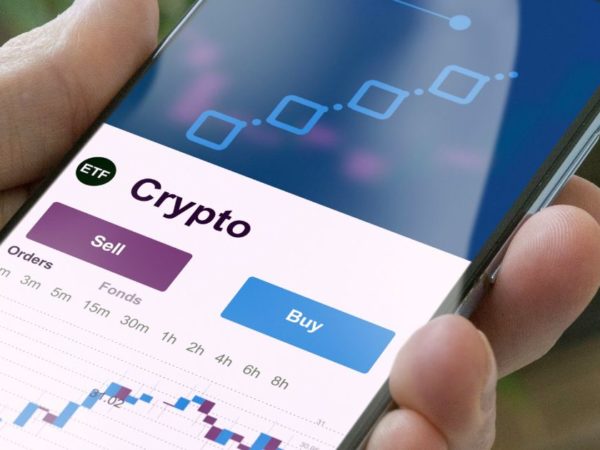ERC-20 is a technical smart contract standard popularly used to implement and issue crypto tokens on the Ethereum blockchain.
After the foundation of Ethereum by Vitalik Buterin in 2014, this open-source platform became the favorite one for the developers of Decentralized Applications (DApps). With the increase in DApps development, it was essential to have a technical standard. Finally, ERC-20 was created to provide a standard framework for developers.
The smart contract used by Ethereum is a program that automatically executes functions that can be regular contracts or rules. ERC-20 is the most significant Ethereum smart contract standard. To learn more about smart contracts, take a look at this beginner’s guide.
You may wonder, “How did they come up with this ERC and 20?”Let’s get into that first. ERC, or Ethereum Request for Comment, is a technical process put forward by the Ethereum developer community for new standard proposals.
Developer Fabin Vogelstellar in 2015, shared a proposal on the 20th comment on the Ethereum GitHub page. As a result, the technical standard was named ERC-20.
Vogelstellar’s proposal was approved by the Ethereum developer community in 2017. After the approval, the proposal was implemented as Ethereum Improvement Proposal 20 (EIP-20). However, this effective proposal is still called ERC-20, the initial name of the proposal.
According to the reports submitted at Yahoo! Finance’s All Markets Summit in 2018, Initial Coin Offerings (ICOs) raised $3.2 billion at the end of 2017.
Moreover, ICOs also outperformed VC funding by 16 times. Thanks to the implementation of ERC-20.
Properties of ERC-20 Standard
As discussed above, regarding the implementation of the ERC-20 standard, let’s also have a look at its salient properties:
- The ERC-20 standard allows smooth token transfer from one account to another without complications.
- With the ERC-20 standard, you can check the current token balance of any crypto account.
- As a user, you can check the total supply of any particular token available on the Ethereum blockchain network.
- You can also approve or reject the number of tokens spent by other third-party accounts.
- Apart from that, once the ERC-20 token contract is deployed, all the tokens created on Ethereum are properly tracked.
Contents of ERC-20 Standard
An ERC-20 consists of various events and functions a crypto token needs to implement. This standard is also in charge of the governance action executed by the smart contracts. The primary functions and information needed to create an ERC-20 compliant token are:
- TotalSupply: The total number of crypto tokens the developer plans to issue.
- BalanceOf: Represents the account balance available on the token owner’s account. You can use this function to inquire about the balance of any known addresses.
- Transfer: Used to automatically transfer a stated number of tokens to a particular crypto address.
- TransferFrom: This function allows the transfer of specified tokens from a particular crypto address. Moreover, you can also use TransferFrom to authorize another person to transfer the funds on your behalf.
- Approve: Users can use this function to keep a specific number of tokens as a withdrawal limit. Using this function, you can limit the risk of wiping out all your tokens in the case of spamming.
- Allowance: The allowance function can provide contract permission to return a certain number of tokens from the spender to the owner.
ERC-20 Tokens: How Are They Created?
ERC-20 tokens consist of any fungible tokens or cryptocurrencies built using the ERC-20 Standard on the Ethereum blockchain. Ethereum has helped developers and entrepreneurs build hundreds of crypto tokens and projects.
ERC-20 tokens use the Ethereum address for every transaction, and the Ethereum blockchain is used to store the data. Implementing the ERC-20 standard has created a surge in developing crypto-based projects and transactions worth more than billions of dollars.
It is easy to create an ERC-20 token, so just making a crypto token doesn’t add any value. According to etherscan.io, more than 6 lakh ERC-20 token contracts have been created at the time of writing. Most of the tokens created are failed projects, hobbies, or just tokens without value.
As we have discussed the ERC-20 tokens, let’s take a look at what you need to create such tokens:
#1. Define Token Properties
The main objective of a token creator is to have a proper definition and goal behind the token creation. Suppose you are looking to find investors for a particular token-based crypto project. In that case, you must have defined properties matching the ERC-20 standard. You must specify:
- Total token supply.
- Token name and symbol.
- The total number of required decimals.
You can find lots of platforms that help you to create your basic tokens with the ERC-20 standard. However, suppose you plan to build a token with more advanced functions and use cases. In that case, you need to approach a professional crypto development team.
#2. Develop a Smart Contract
As we have discussed in the beginning, Ethereum uses smart contracts to execute transactions. You need to code or get professional help from coders to create codes that need to be deployed in the smart contract. The basic token-generating sites also write code in the backend for you.
The more complex the use cases and functionality of the token, the smart contract also becomes complex. If you plan to build a token for an advanced crypto project, it’s best to seek professional assistance.
#3. Run Quality Assurance Tests
The most important thing to remember while developing a crypto token is to avoid bugs. As various codes are deployed in the smart contract, there is a higher possibility of programming errors.
It is better to find errors before deploying the smart contract to avoid pain in the future. You can use a test blockchain such as Ropsten or Rinkeyby to conduct multiple tests.
#4. Deploy Smart Contract to Blockchain
Finally, it’s time to deploy your smart contracts onto the blockchain after eliminating the chance of technical errors. This final step is the easiest one related to token creation. It hardly takes a few clicks to complete the execution.
Once the smart contracts are deployed successfully, you are the proud owner of your token. Apart from that, you can also utilize the benefits of an ERC-20 token. Still, wondering about the features of an ERC-20 token? Don’t worry; we will discuss it in detail.
Distinct Features of ERC-20 Tokens
As we have discussed the ERC-20 tokens and their creation, let’s understand the important features of these tokens;
#1. Fungible
Fungibility is a prominent feature of ERC-20 tokens. It means that you can interchange one token with another. This feature allows users to exchange tokens without any complexity.
In addition, the fungible nature of the tokens also helps different crypto projects to connect and collaborate regardless of their token type. As a result, fungible ERC-20 tokens played a vital role in Ethereum adoption.
#2. Flexible
ERC-20 tokens are one of the most flexible forms of tokens. You can customize your tokens according to your crypto project’s use case. You can also build a simple token if you need a meme token without actual use cases.
Suppose you are an entrepreneur who builds crypto projects that solve multiple problems. In that case, you can also customize your token according to your multiple use cases. A single token can act as loyalty points, in-game currency, digital collectibles, or property rights.
#3. Compatible
ERC-20 tokens can be used on multiple platforms, wallets, exchanges, and projects without additional effort. For example, you can exchange tokens with your friend using two different platforms within a few seconds.
ERC-20 tokens can be easily transferred from one person to another using Ethereum wallets. The sender needs to provide the unified wallet address of the receiver. After the successful transaction, the receiver’s wallet gets credited with the ERC-20 tokens.
#4. Unique Name and Symbol
An ERC-20 token is created with a specific name and a symbol. This feature plays a significant role in the identification of the token. For instance, if you create a token with a unique name, it will be easy for others to find your token on various listed platforms.
Along with the token name, the token symbol helps to differentiate it from other similar tokens. Most popular tokens use 3 to 4 characters to represent the token symbol.
For example, the token symbol for Enjin Coin is ENJ. You can use “ENJ” to search for the token price, smart contract address, transaction details, and more.
Popular ERC-20 Tokens
Are you interested in knowing about some popular ERC-20 tokens?
Let’s check the tokens that fit into the list:
- Tether ( USDT)
- USD Coin (USDC)
- Binance Coin (BNB)
- Binance USD ( BUSD)
- Wrapped Bitcoin (WBTC)
- HEX (HEX)
- Shiba Inu (SHIB)
- Dai (DAI)
- Matic Token (MATIC)
- Theta Token (THETA)
Disadvantages of ERC-20 Tokens
Right now, you might be excited about the positive aspects of the ERC-20 standard and its tokens, right? Good, but let’s also look at some of the disadvantages of tokens developed using ERC-20:
- Low scalability due to Ethereum network congestion.
- Minimal effort to create tokens helps to create scam tokens.
- Slow transaction speed.
- High transaction fees.
Other Major ERC Standards
ERC-20 is the most popular and widely used Ethereum Standard, but there are many more ERC standards. The popular ERC standards out there are:
- ERC-721: This standard was proposed to issue NFTs. As non-fungible tokens can’t be exchanged or transferred using the fungible ERC-20 standard, ERC-721 was created. In short, ERC-721 is an NFT standard.
- ERC-777: ERC-777 standard allows an emergency recovery function in case your private keys are lost. Apart from that, this ERC standard improves your transaction privacy.
- ERC-1155: You can use this standard to build tokens that provide more efficient transactions. Therefore, ERC-1155 saves lots of your transaction fees. Apart from that, you can use this standard to create Non-Fungible Tokens and utility tokens.
- ERC-223: In the case of ERC-20 tokens, if you send tokens to the wrong address, your tokens are lost forever. Here, ERC-223 comes up with a meaningful solution. Once you send ERC-223 tokens to a wrong smart contract that can’t handle a token, the transfer fails, and you get back your tokens.
Wrapping It Up!
The ERC-20 standard has created a revolutionary impact on token developers. After implementing this innovative token standard, many significant crypto projects and their tokens came into existence.
Moreover, ERC-20 has paved the way to create more ERC token standards that solve various problems on the Ethereum blockchain. ERC-20 tokens are very popular in crypto, but before buying any crypto tokens, DYOR!
Interested in knowing more about topics related to Ethereum? Then, read about the Ethereum Merge.



